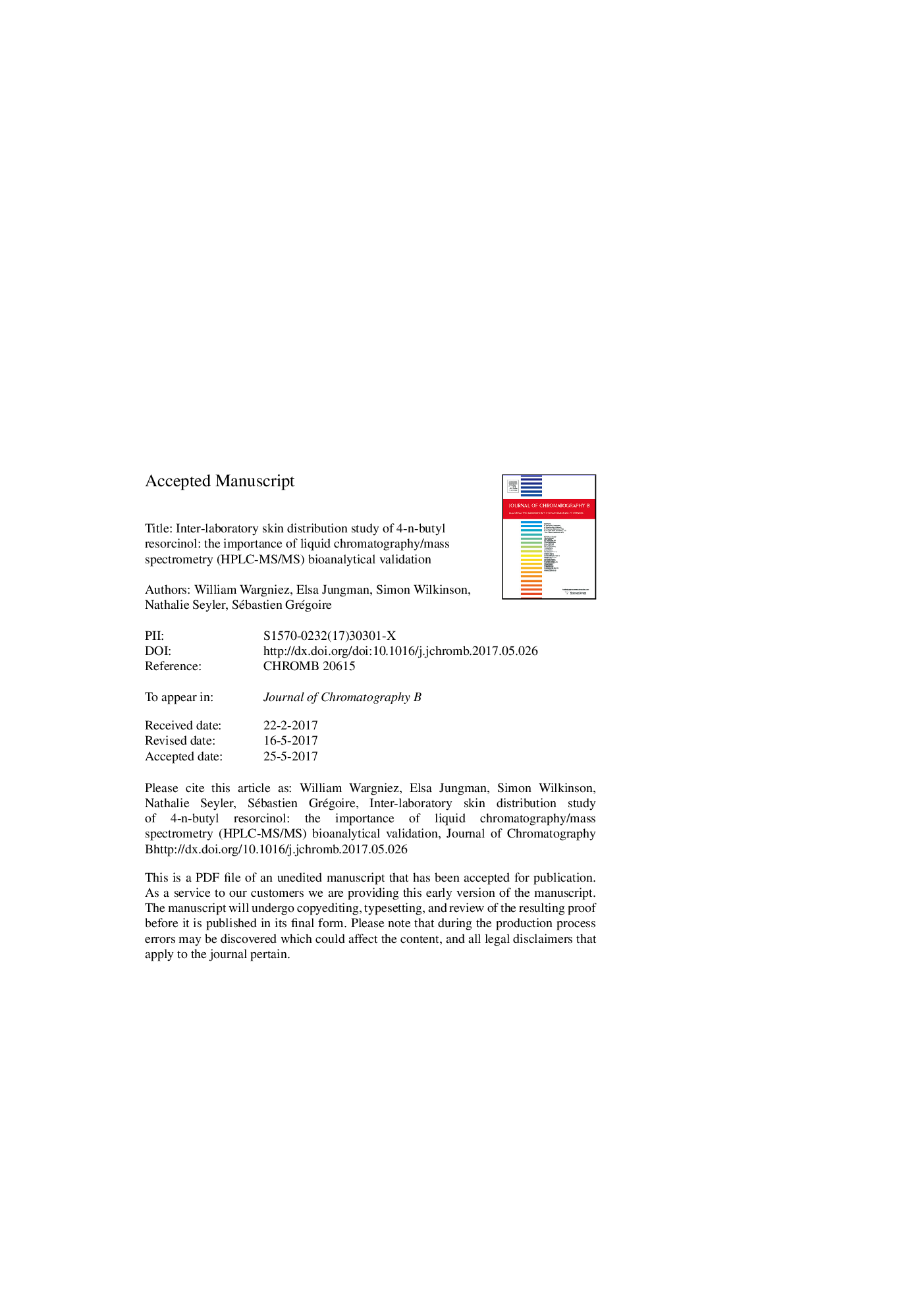| Article ID | Journal | Published Year | Pages | File Type |
|---|---|---|---|---|
| 5136433 | Journal of Chromatography B | 2017 | 16 Pages |
Abstract
In the present study, three laboratories independently compared percutaneous absorption and distribution of 4-n-butylresorcinol, using human skin from five donors. Each laboratory used the same protocol for percutaneous absorption studies but different LC-MS/MS analytical methods to quantify the test compound. All laboratories respected the mass balance criteria (i.e. 100 ± 15%; average 96.5-102% of applied dose). Regarding usual inter-lab variability, good agreement was observed for all compartments with the greatest difference in the epidermis: 3.3 fold increase. The data obtained demonstrate that robustness of skin absorption data rely on properly validated analytical methods including sample extraction and LC-MS/MS method. It also includes clearly defined cutaneous absorption protocol for dose skin preparation, application, washing and tape stripping.
Keywords
LLOQESIreceptor fluidULOQcoefficient of variation (%)TEWLACNAPCIMatrix effectTrans epidermal water lossinternal standardAcetonitrileFormic acidValidationstandard deviationEpidermisextraction recoveryskin absorptionupper limit of quantificationLOD یا Limit of detectionlower limit of quantificationDermisCV%WashingMass spectrometryStratum corneumMethanollimit of detectionMeOHRobustnessliquid chromatographyquality controlelectrospray ionizationatmospheric pressure chemical ionization
Related Topics
Physical Sciences and Engineering
Chemistry
Analytical Chemistry
Authors
William Wargniez, Elsa Jungman, Simon Wilkinson, Nathalie Seyler, Sébastien Grégoire,
